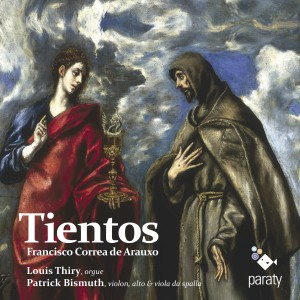
Likely of Portuguese origin, Francisco Correa de Arauxo, one of the greatest Spanish organists of the 17th century, is one of the distinguished representatives of the famous Spanish “Golden Age” (El Siglo de Oro). Linking the Renaissance to the Baroque, he was born in 1584. A composer and musical theorist, he was ordained priest in 1608, received his musical education in Seville, and started his career as an organist in 1592 in the city’s second biggest church, San Salvador. He subsequently moved to Andalusia in 1636 and was appointed organist at Jaén Cathedral. In 1640 he became the organist of the Segovia Cathedral, where he remained until his death in 1654. It is in this cathedral, the last major architectural work of Gothic style, that he is buried.
His only surviving works are contained in a single volume published in 1626, entitled Libro de tientos y discursos de música práctica y theórica de órgano intitulado Facultad orgánica. The volume contains 69 works for the organ in numeric tablature, of which 62 are tientos, in which he progressively emancipates himself from the modal system. The works are introduced by an extensive preface in which the author writes about fingering, touch, virtuosity, dissonance, chromaticism and ornamentation. The book, as indicated by its title, is both an anthology of organ pieces of various and progressive difficulty, as well as a theoretical work. The music seems to have no precise liturgical function. Correa de Arauxo recommends reading his preface before attempting to play the tientos; he insists on explaining the form with precision, and each piece is accompanied by a specific commentary. Tiento was the most commonly employed musical genre of Spanish musicians of the 16th and early 17th century. Antonio de Cabezón (1510-1566), in particular, established himself as the first great composer of tientos for the organ. In 1535, the Spanish vihuelist Luis Milán explained that the tiento, resembling the Italian ricercar or even the toccata, was a genre intended to allow the musician to try out an instrument. The word is presumed to come from the Spanish tentar or the lantin tentare (to try, to experiment). Most of the tientos assembled by Francisco Correa de Arauxo in Facultad orgánica are tientos de medio registro, in reference to certain characteristics of the 17th century Iberian organ, whose unique keyboard was divided at middle C in two equal registers. This was a simple yet ingenious technique which allows one to register the upper and lower manuals of the instrument independently.

